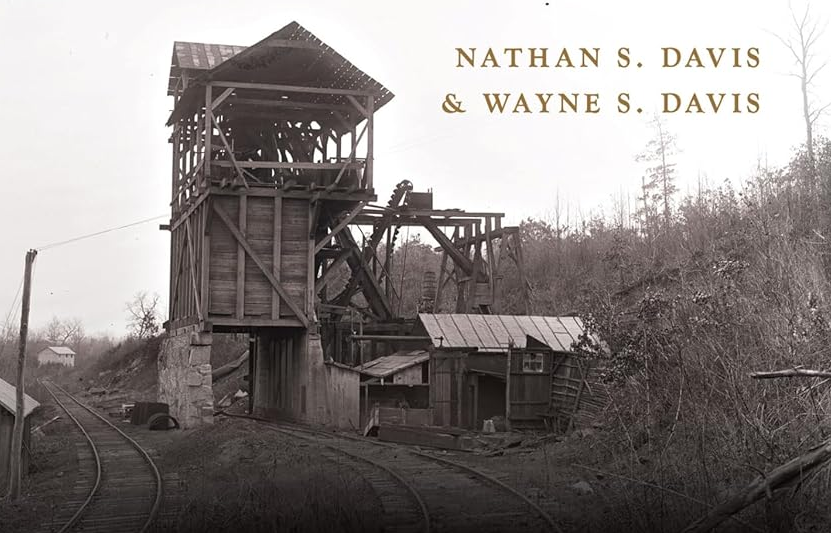
Book Review
Editor’s Note: This book is a must-read for anyone who wants an unfluffy historical view of Howard County.
The first sentence of this book pretty much sums up its theme: “There is quite a lot of hidden history in Howard County (HoCo), and in preparation for this book, it sometimes felt like history was being hidden from us.”
If history were being hidden, the authors certainly did their best to uncover it. The book is meticulously researched and extensively end-noted. That much is clear from the numerous references to historical records that date back as far as colonial times.
While the book starts by describing the county’s ever-shifting boundaries and the way Howard County coalesced from parts of other counties, it moves quickly into the industrial history of the region. Mills were abundant along the state’s various rivers and tributaries, but Howard County was also known for its quarries. According to the book, granite was the stone that built Howard County.
Railroads and Rivers
Railroads played an important role in all this, providing the transportation to move products into market. Thus, the Baltimore & Ohio Railroad became essential for that purpose. To cross Maryland’s many waterways, the railroads relied on bridges of historical significance, including the Bollman truss bridges and the Pratt bridges.
Eldridge Landing, once considered a promising port city, failed to succeed on a par with Baltimore, once the Patapsco River became virtually unnavigable due to runoff from mining operations.
Getting the Know the Lesser Known of Howard
The authors do a good job of weaving stories of lesser-known, but fascinating, individuals and stories into the narrative about the development of the different communities in southeast Howard County, in particular. They include:
- local black history research done by Beulah (Meacham) Buckner, author of The Forgotten Howard Countian—Color Me Black;
- details from the life of Commodore Joshua Barney, the “Guilford Pirate”, who, among other things, was instrumental in creating Savage Mill;
- the story of Augustus Collins, a former slave, who was judged to have attempted an insurrection;
- the non-lynching of Hezekiah Brown.
The authors have done an outstanding job of constructing a narrative of the lesser-known or celebrated aspects of Howard County’s founding. They hold nothing back in terms of myth-busting certain cherished notions about its history. For instance, did Harriet Tubman actually run the Underground Railroad through Howard County? The authors cast substantial doubt on that assertion.
They also pulled no punches on the subject of slavery and the high level of anti-abolition sentiment in what has become over the years a primarily liberal state. Particularly, Howard County, in which the bumper sticker “Choose Civility” can be found today on many a vehicle. Much has changed with the development of the planned community, Columbia (which itself has a fascinating history), as well as the county’s placement within commuting distance of two major cities—Baltimore and Washington.
The Uncivil Past of Howard County
Much of the book’s focus is on Guilford and Savage—two geographically close, but very different communities. Among other things, the chapter on Guilford’s Heyday covers the significance of Reverend Willis J. Carter and family. Guilford Day was an annual August festival that drew people from around the region for fifteen years.
Savage, a mill town with a notable history, gets a chapter, too. It was the location of Santa Novelties Inc., a company devoted to making blown glass Christmas ornaments. The owner Harry Harrison Heim even tried to rename the town “Santa Heim,” but support for this eventually waned. Savage is also home to the first Howard County public library, originally housed in the historic Carroll Baldwin Hall.
To their credit, the authors don’t gloss over Howard County’s foot-dragging compliance with the order under Brown v. Board of Education to desegregate its public schools or the town of Savage’s history of antipathy toward black people (who risked their lives if they were discovered within town limits after dark at one time). The authors also note that Savage has documented its own acknowledgment of these issues and described it as “a markedly changed community, characterized by a colorful diversity of faith, race, ethnicity, genders, and other identities.” You could say the same for Howard County as a whole.
The book also invites the reader to add to what’s discussed within the book’s pages. There’s an appendix with suggested databases and research tips, among other resources.
It’s been said that Maryland is like America in miniature. In many ways, that’s true of places like Howard County, which reflected the values of a border state during the Civil War, struggled to comply with new laws and attitudes during the civil rights era, and eventually gave way to change, while honoring the past. The book is a treasure trove of Howard County lore for anyone interested in exploring U.S. history.
Debbi Mack is the NY Times bestselling author of the Sam McRae and the Erica Jensen mystery series and other novels, a screenwriter, and producer of two podcasts: the Crime Cafe and Dark and Twisted Alleys: A Film Noir Podcast, co-hosted with crime writer F.R. Jameson. She loves books, movies, travel, cats, espresso, and Doctor Who—not necessarily in that order. You can find her online at debbimack.com.
________________
To buy a copy of Hidden History of Howard County, CLICK HERE.
________________________________________________________________________________________________________________________________________________
________________________________________________________________________________________________________________________________________________
RELATED ARTICLES:
Last Segregated School Revisited on Memorial Day
Did You Know? The Guilford Mill was Built in 1744
Spotlight – Willis J. Carter
____________________________________________________________________________________________________________________________________________
HOME | NEWS | OPINION | LIVING | POLITICS | POLITICAL RESOURCES | HEALTH | CALENDAR 1 | CALENDAR 2 | BUSINESS | YOUTH | HISTORY | RELIGION | SPORTS
____________________________________________________________________________________________________________________________________________

